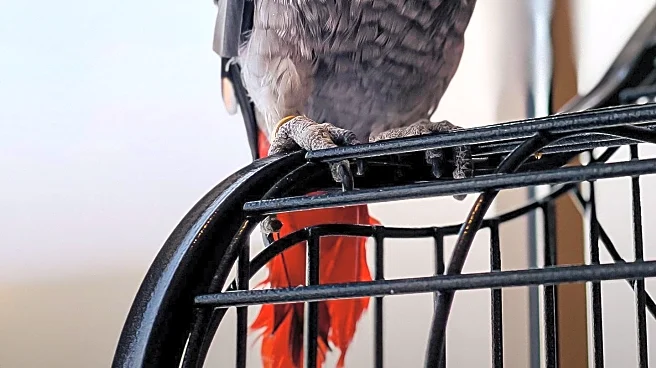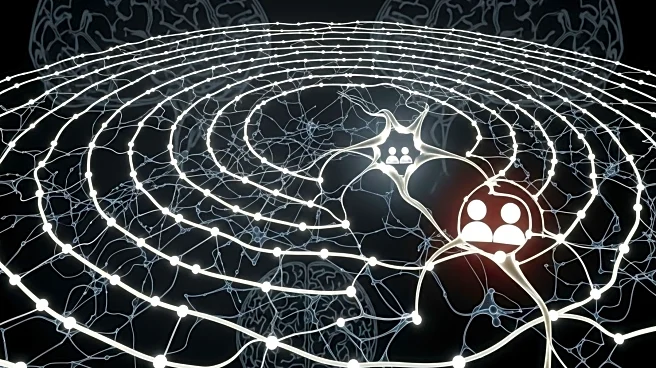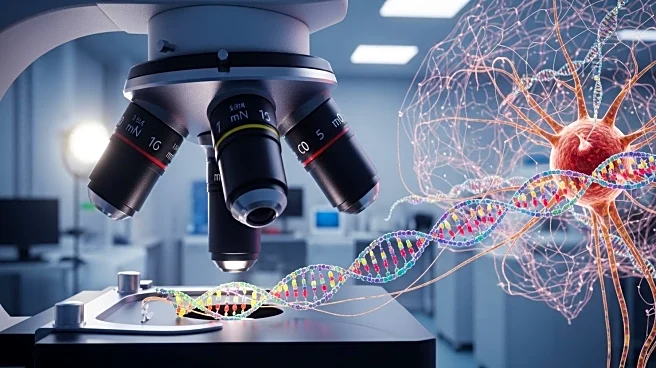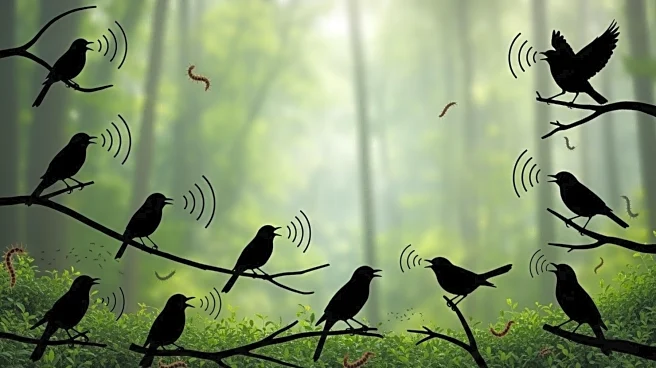What's Happening?
Recent studies have highlighted the complex communication abilities of animals, such as dogs and elephants. Dogs have been shown to categorize toys based on their use, while elephants use specific vocalizations to address members of their group. These findings suggest that animal communication is more intricate than previously thought, with parallels to human language. For instance, bottlenose dolphins create unique signature whistles that serve as names, and sperm whales use patterns of clicks akin to a phonetic alphabet. These discoveries challenge the human-centric view of animal communication, emphasizing the need to understand it on the animals' terms.
Why It's Important?
Understanding animal communication can significantly impact how humans interact with and conserve wildlife. Recognizing the complexity of animal languages may lead to more effective conservation strategies and enhance human-animal interactions. It also prompts a reevaluation of the cognitive abilities of animals, potentially influencing public policy and ethical considerations regarding animal rights. As animals exhibit social behaviors similar to humans, acknowledging their communication methods could foster greater empathy and support for wildlife protection initiatives.
Beyond the Headlines
The study of animal communication opens up ethical discussions about the treatment of animals in captivity and the importance of preserving their natural habitats. It also raises questions about the moral implications of using animals for entertainment or research without fully understanding their communicative abilities. Long-term, these insights could lead to shifts in cultural attitudes towards animals, promoting a more respectful and informed approach to wildlife conservation.










